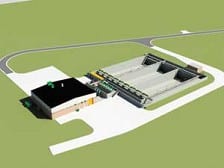Keep it clean

.floatimg-left-hort { float:left; } .floatimg-left-caption-hort { float:left; margin-bottom:10px; width:300px; margin-right:10px; clear:left;} .floatimg-left-vert { float:left; margin-top:10px; margin-right:15px; width:200px;} .floatimg-left-caption-vert { float:left; margin-right:10px; margin-bottom:10px; font-size: 12px; width:200px;} .floatimg-right-hort { float:right; margin-top:10px; margin-left:10px; margin-bottom:10px; width: 300px;} .floatimg-right-caption-hort { float:left; margin-right:10px; margin-bottom:10px; width: 300px; font-size: 12px; } .floatimg-right-vert { float:right; margin-top:10px; margin-left:10px; margin-bottom:10px; width: 200px;} .floatimg-right-caption-vert { float:left; margin-right:10px; margin-bottom:10px; width: 200px; font-size: 12px; } .floatimgright-sidebar { float:right; margin-top:10px; margin-left:10px; margin-bottom:10px; width: 200px; border-top-style: double; border-top-color: black; border-bottom-style: double; border-bottom-color: black;} .floatimgright-sidebar p { line-height: 115%; text-indent: 10px; } .floatimgright-sidebar h4 { font-variant:small-caps; } .pullquote { float:right; margin-top:10px; margin-left:10px; margin-bottom:10px; width: 150px; background: url(http://www.dmbusinessdaily.com/DAILY/editorial/extras/closequote.gif) no-repeat bottom right !important ; line-height: 150%; font-size: 125%; border-top: 1px solid; border-bottom: 1px solid;} .floatvidleft { float:left; margin-bottom:10px; width:325px; margin-right:10px; clear:left;} .floatvidright { float:right; margin-bottom:10px; width:325px; margin-right:10px; clear:left;} It’s far from the most glamorous construction project, but let’s face it, everybody uses the toilet and all that raw sewage needs to go someplace – the Des Moines River, however, should no longer be that place, according to environmental law.
A new estimated $55.56 million facility at the Des Moines Wastewater Reclamation Authority (WRA), 3000 Vandalia Road, will be a key element in the city’s long-term efforts to prevent raw sewage from overflowing untreated into the Des Moines River, backing up into homes and dislodging manhole covers during large rain events.
The Combined Sewer Solids Separation Facility (CSSSF), which will be one of the largest construction projects in recent years in Des Moines, is part of a Long Term Control Plan to upgrade Des Moines’ aging sewer systems and limit all untreated sewage discharge by 2023 as mandated by the Environmental Protection Agency’s (EPA) Federal Clean Water Act.
The Des Moines City Council approved a Consent Decree on March 22 with the Attorney General of Iowa to promote compliance with the Clean Water Act by way of the Long Term Control Plan, under which Des Moines has committed to contributing the majority of the more than $200 million in sewer improvements over the term of the decree.
As part of the project, a main facility will be constructed along with a control building, three 60-by-80-foot retention basins, a dechlorination building, two 72-inch outfall pipes to the Des Moines River and two standby power facilities.
Construction of the CSSSF, one of the largest pieces of the Long Term Control Plan, is scheduled to begin in June and be completed by Dec. 31, 2012, according to project manager Nicholas Carter.
Des Moines’ sewer system, a combined sewer system, was built to contain both sewage and rainwater runoff in separate channels of the same underground pipe. That pipe runs to the existing WRA treatment facility where the flows are treated, then discharged into the Des Moines River.
When rain levels, however, reach a certain point, the runoff water combines with the sewage, Carter said. Because the system is combined, the treatment facility must treat all the water. The problem is, during high flow events (periods during and after high rainfall) the facility is not capable of treating all of the inflow, Carter said.
The sewer system was built under the premise that when the pipe was filled, rainwater/sewage mix would overflow into the adjacent water ways, by way of Combined Sewer Overflows (CSO), said Bill Stowe, Des Moines director of public works.
During the heavy rains two weeks ago, for example, Stowe estimated about 15 million gallons per day of the untreated mix spilled into the Des Moines River over the course of about five or six days.
The new CSSSF will help supplement the existing facility and allow the WRA to treat an additional 300-400 million gallons of wastewater.
The sewer system used to have 20 CSOs. That number is now down to seven – including the location at the existing treatment facility – but the Clean Water Act requires all of the CSOs, minus the existing facility, to be closed by 2023.
Once the new CSSSF is completed, it will be possible to begin closing off the outflow pipes in stages. As part of the Long Term Control Plan, Stowe said, the sewer system will eventually have a separate pipe for storm water and a separate pipe for sewage, in order to fully control overflows.
“This makes environmental sense in a city that wants to promote Riverwalk and the rivering experience,” Stowe said. “I think combined river overflows is probably not amendable to that.”
The new facility will also help protect individual property owners from potential sewage backup into their homes and basements during high flow events.
The sewer problem in Des Moines is hardly unique to the city, said Stowe and Carter. Many river cities around the country built their sewer systems during the 19th century – parts of Des Moines’ system included – and are facing similar situations due to the Clean Water Act. In Iowa alone about 14 older towns are dealing with the regulations, Stowe said.
“(The cities) were built on the premise that you put (sewage and rainwater) both together and blast it into the river,” Stowe said. “And once upon a time that was OK.”
Burlington, Ottumwa and Clinton, among others, are dealing with situations similar to that in Des Moines.
Stowe says the federal government has been understanding about the high financial cost and given cities time to plan and execute this project. Nonetheless, the financial burden falls largely on the shoulders of the rate payers.
Currently no grants have been awarded for the project, and the costs will be shared by the WRA and city of Des Moines by way of the loans from the State Revolving Fund. The cost, according to the Des Moines City Council, will result in significant rate impacts upon Des Moines’ sanitary and stormwater utility ratepayers.
The pre-bid letting conference will be held at 9 a.m. April 21 at Des Moines City Hall. The bid date is set for May 4.







